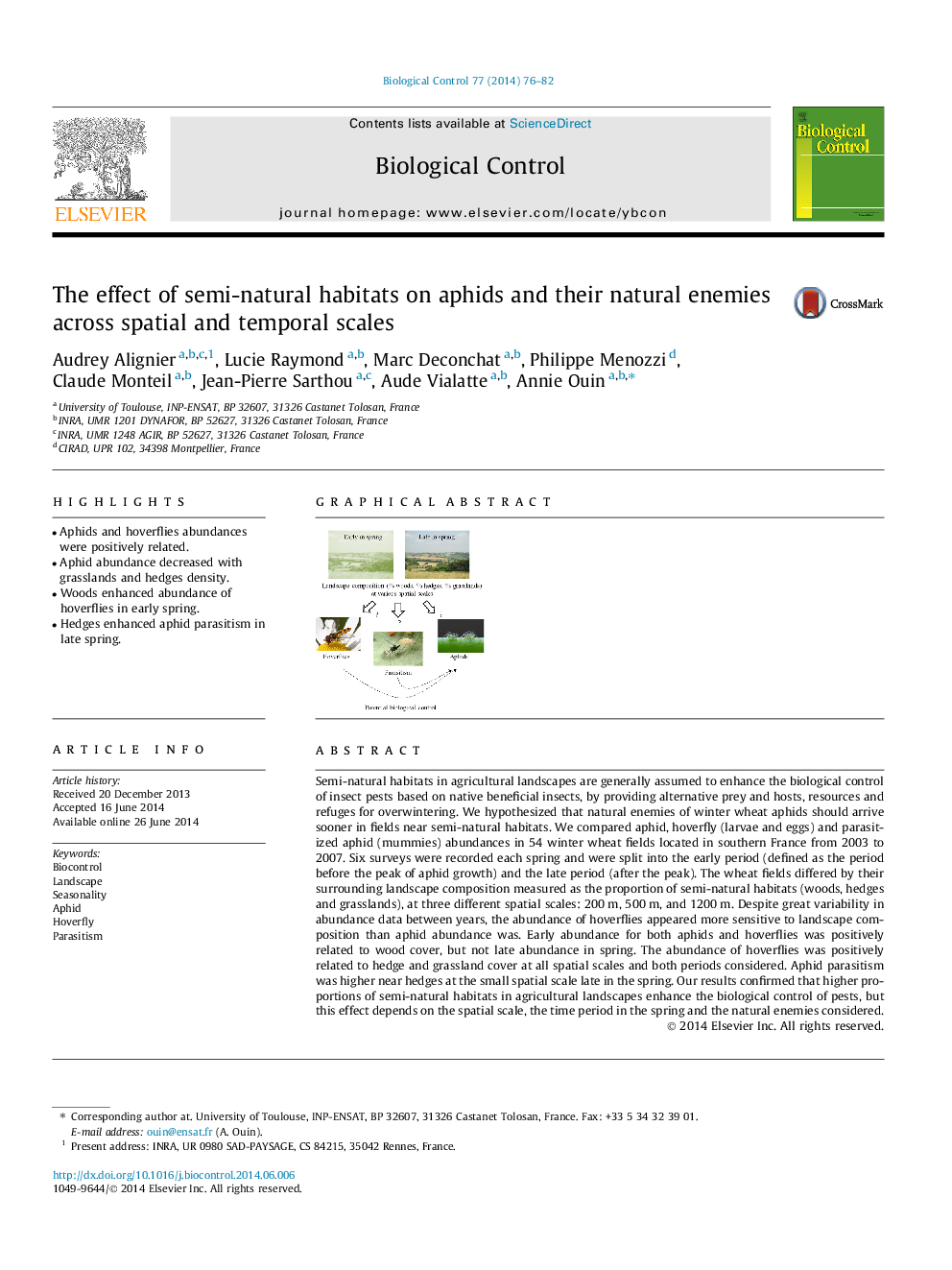| کد مقاله | کد نشریه | سال انتشار | مقاله انگلیسی | نسخه تمام متن |
|---|---|---|---|---|
| 4503871 | 1624257 | 2014 | 7 صفحه PDF | دانلود رایگان |
• Aphids and hoverflies abundances were positively related.
• Aphid abundance decreased with grasslands and hedges density.
• Woods enhanced abundance of hoverflies in early spring.
• Hedges enhanced aphid parasitism in late spring.
Semi-natural habitats in agricultural landscapes are generally assumed to enhance the biological control of insect pests based on native beneficial insects, by providing alternative prey and hosts, resources and refuges for overwintering. We hypothesized that natural enemies of winter wheat aphids should arrive sooner in fields near semi-natural habitats. We compared aphid, hoverfly (larvae and eggs) and parasitized aphid (mummies) abundances in 54 winter wheat fields located in southern France from 2003 to 2007. Six surveys were recorded each spring and were split into the early period (defined as the period before the peak of aphid growth) and the late period (after the peak). The wheat fields differed by their surrounding landscape composition measured as the proportion of semi-natural habitats (woods, hedges and grasslands), at three different spatial scales: 200 m, 500 m, and 1200 m. Despite great variability in abundance data between years, the abundance of hoverflies appeared more sensitive to landscape composition than aphid abundance was. Early abundance for both aphids and hoverflies was positively related to wood cover, but not late abundance in spring. The abundance of hoverflies was positively related to hedge and grassland cover at all spatial scales and both periods considered. Aphid parasitism was higher near hedges at the small spatial scale late in the spring. Our results confirmed that higher proportions of semi-natural habitats in agricultural landscapes enhance the biological control of pests, but this effect depends on the spatial scale, the time period in the spring and the natural enemies considered.
Figure optionsDownload as PowerPoint slide
Journal: Biological Control - Volume 77, October 2014, Pages 76–82
